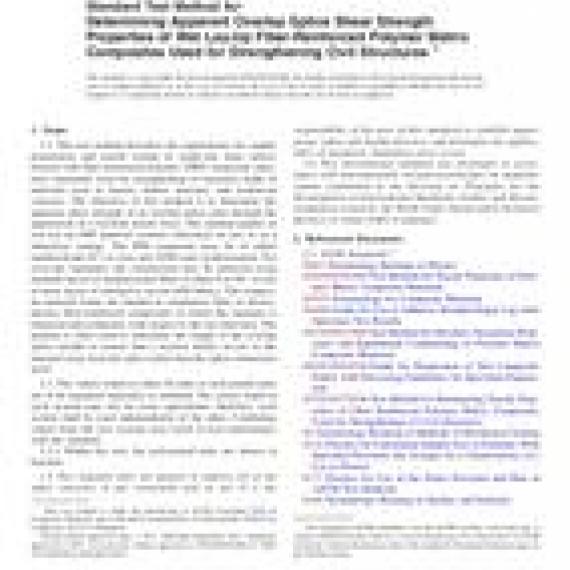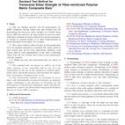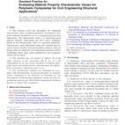No products
ASTM D7616/D7616M-11(2017)
ASTM D7616/D7616M-11(2017) Standard Test Method for Determining Apparent Overlap Splice Shear Strength Properties of Wet Lay-Up Fiber-Reinforced Polymer Matrix Composites Used for Strengthening Civil Structures
standard by ASTM International, 08/01/2017
Full Description
1.1This test method describes the requirements for sample preparation and tensile testing of single-lap shear splices formed with fiber-reinforced polymer (FRP) composite materials commonly used for strengthening of structures made of materials such as metals, timber, masonry, and reinforced concrete. The objective of this method is to determine the apparent shear strength of an overlap splice joint through the application of a far-field tensile force. The method applies to wet lay-up FRP material systems fabricated on site or in a laboratory setting. The FRP composite may be of either unidirectional (0) or cross-ply (0/90 type) reinforcement. For cross-ply laminates, the construction may be achieved using multiple-layers of unidirectional fibers at either 0 or 90, or one or more layers of stitched or woven 0/90 fabrics. The composite material forms are limited to continuous fiber or discontinuous fiber-reinforced composites in which the laminate is balanced and symmetric with respect to the test direction. The method is often used to determine the length of the overlap splice needed to ensure that a tension failure occurs in the material away from the splice rather than the splice connection itself.
1.2The values stated in either SI units or inch-pound units are to be regarded separately as standard. The values stated in each system may not be exact equivalents; therefore, each system shall be used independently of the other. Combining values from the two systems may result in non-conformance with the standard.
1.2.1Within the text, the inch-pound units are shown in brackets.
1.3This standard does not purport to address all of the safety concerns, if any, associated with its use. It is the responsibility of the user of this standard to establish appropriate safety and health practices and determine the applicability of regulatory limitations prior to use.
1.4This international standard was developed in accordance with internationally recognized principles on standardization established in the Decision on Principles for the Development of International Standards, Guides and Recommendations issued by the World Trade Organization Technical Barriers to Trade (TBT) Committee.


































